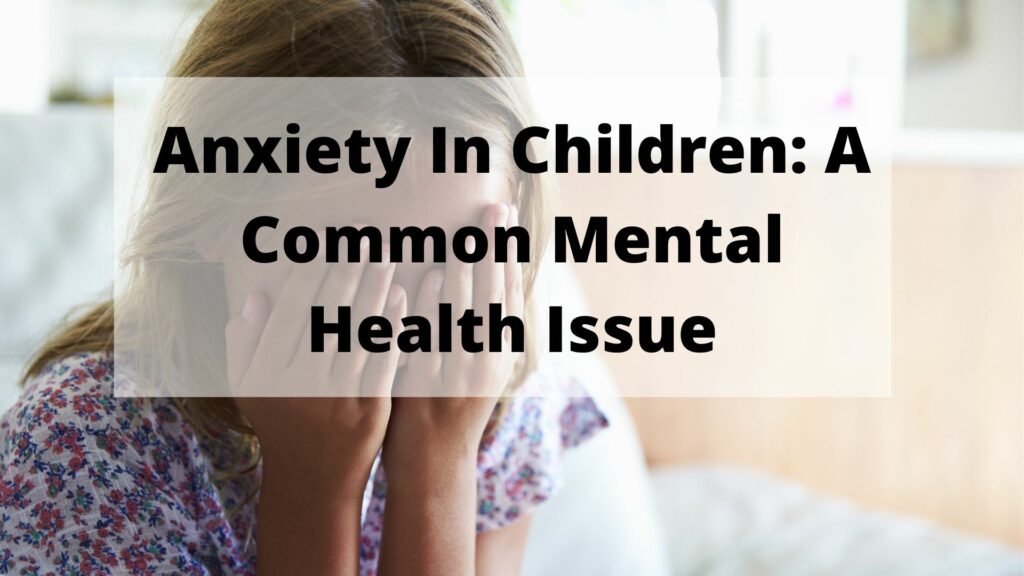There is a lot of stigma surrounding mental health issues, and this can make it difficult for children to speak up about what they are feeling. Anxiety in children is often overlooked because it doesn’t present the same physical symptoms as anxiety in adults. However, anxiety in children has become an increasingly common problem that parents should be aware of. This article will explore some causes of childhood anxiety and offer tips on how to help your child find relief from their worries.
Contents
What Is Anxiety?
Anxiety is when people feel tense, worried, panicky, and stressed out. People with anxiety often worry about money or health – even fitness. It can be hard for them to relax because they’re always worrying. Kids can get it too!
Anxiety is one of the most common mental health issues among children. It causes them to feel panicky, stressed out, and worried regularly – even when there’s little or nothing in their lives that would cause such feelings.
Symptoms of Anxiety In Children
Children are not immune to anxiety, and it may strike at any age. It is quite frequent for children to have anxiety disorders, although they do occur.
The Centers for Disease Control and Prevention (CDC) claims that 7.1% of youngsters aged three to 17 have diagnosable anxiety, while other studies put the number as high as 20%.
Anxiety Symptoms can vary greatly from one child to the next, but certain behaviors are common among children with true anxiety disorders. If you notice these signs in a child, the child might be suffering from anxiety.
the symptoms are –
- Anger or aggression
- Avoiding certain situations
- Bedwetting
- Changes in appetite
- Fatigue
- Getting in trouble at school
- Headaches
- Irritability
- Muscle tension
- Nervous habits such as nail-biting
- Nightmares
- Refusing to go to school
- Restlessness
- Social withdrawal
- Stomach aches
- Trouble concentrating
- Trouble sleeping (insomnia)
Symptoms can vary in frequency and appearance depending on the sort of anxiety. Some phobias, for example, might be triggered by particular circumstances, items, or settings. Other types of anxiety, such as generalized anxiety syndrome or panic disorder, may produce symptoms that occur more frequently.
Symptoms that impede a child’s learning, socializing, sleeping at night, or functioning normally in daily life are other indications of concern.
Some children have persistent fears that go beyond the normal time when they are expected to get over them (such as being frightened of the dark or being separated from their parents after the age of four).
Causes of Anxiety In Children
Several factors can instill dread and anxiety in children of all ages. New situations, complex chores, and even strange individuals may induce fear and anxiety in youngsters from time to time.
Other age-appropriate fears include:
- Stranger anxiety beginning at 7 to 9 months of age and resolving around age 31
- Fear of the dark, monsters, insects, and animals in preschoolers
- Fear of heights or storms in younger school-age children
- Worry about school and friends in older school-age children and teens
When it comes to severe anxiety in children, there are several things that parents should keep in mind. These fears are common and generally diminish on their own once a kid grows older. It takes more than isolated anxiety, which is natural, to suggest genuine symptoms of an anxiety disorder.
In everyday life, kids can have anxiety. It can be because of things that adults think are not serious. Kids’ feelings and thoughts are different from those of adults.
For example, some common causes for childhood stress include having a hard time making friends at school, not being able to do well on a test, feeling different/uncomfortable around peers, etc.
There is no limit as to what could trigger these feelings in your child because there are so many factors with how they process information and stimuli coming into their every day.
It doesn’t mean that they are weak or not able to cope with it. Just because a child is experiencing anxiety doesn’t mean there’s something wrong with them either because this is simply how their brain and body respond when presented with these overwhelming emotions, thoughts, and fears.
Anxiety And Problems In Children
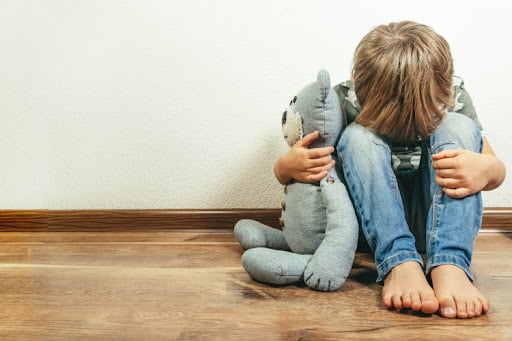
Anxiety becomes a problem for children when it begins to interfere with their daily activities.
For example, If you attend any school at exam time, all the children will be nervous, but some might be so terrified that they don’t get to school in time.
Anxiety disorders in children can have a serious negative influence on their emotional and mental health, as well as their self-esteem and confidence. They may become withdrawn and go to great lengths to avoid things or situations that make them anxious.
Types of Anxiety in Children
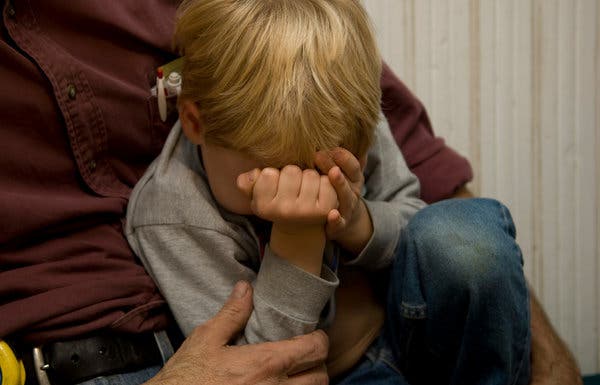
Children may also suffer from other anxiety disorders, such as separation anxiety and obsessive-compulsive disorder (OCD). Some symptoms of worry are more obvious than others. Other types of anxiety can be more difficult to detect because they might not always present themselves in the same manner.
Some of the different types of childhood anxiety include:
Separation Anxiety
It is the fear of being in separation from parents or caregivers. Separation anxiety happens commonly in young children, but it usually fades with age. The refusal to leave without the parent or caregiver, the refusal to sleep alone, and the refusal to attend school are all signs of separation anxiety.
Generalized Anxiety Disorder
A child must have excessive worry and dread for six months or more, with the symptoms of a generalized anxiety disorder (which can manifest as those listed above) being prompted by more than one thing, such as job, school, and friends.
Furthermore, a child who has a general anxiety disorder will have difficulty regulating their worry and will be distressed by it. For example, they may be irritated from not resting that they are unable to keep their friends or grades are slipping as a result of their inability to focus.
Children with a generalized anxiety disorder might experience somatic symptoms such as headaches, stomach aches and pains, and muscular discomfort.
Specific Phobias
Children can have a variety of specific phobias in addition to a generalized anxiety condition. They get anxious and panicky about certain events, such as a thunderstorm, spiders, abandonment, or going into the water, but only about very particular causes.
Most children outgrow this type of anxiety disorder, albeit these youngsters may cry and cling to their parents if they sense that something frightening is approaching or believe that they will be in the presence of whatever frightens them. Fortunately, the vast majority of youngsters overcome this sort of phobia.
Obsessive-Compulsive Disorder
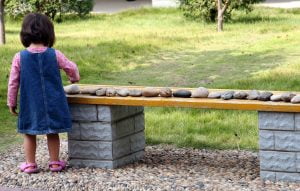
Children with OCD may have recurrent, unwanted thoughts (obsessions) about specific things (often accompanied by compulsive behaviors such as washing one’s hands a lot, checking things over and over, or repeating certain words or phrases to oneself in reaction to the obsessions).
Panic Attacks
Panicky feelings are another form of anxiety disorder that occurs more frequently in the late adolescent years. In addition to strong dread or discomfort, a panic attack is defined as being caused by four or more of the following symptoms:
- A feeling of unreality (derealization) or being detachment from oneself (depersonalization)
- Chest pain
- Chills or hot flashes
- Dizziness
- Feeling choked
- Fear of losing control
- Feeling short of breath
- Nausea or abdominal pain
- Numbness or tingling (paresthesias)
- Palpitations or a fast heart rate
- Sweating
- Shaking
Selective Mutism
This is one of the most frequently overlooked forms of anxiety in children because people assume that these youngsters are only extremely shy.
Selective mutism is an anxiety disorder in which a person refuses to speak in certain situations. They may only talk to close relatives at home, and they might only converse with them when they are at home. When they are required to chat at school or in other places, they frequently become nervous and agitated.
When To Seek Professional Help
If your child’s behavior or anxiety becomes excessively severe, according to the American Academy of Pediatrics and our specialists, you should see a psychologist or psychiatrist who has treated children with an anxiety disorder.
- Disrupts the household and interferes with family activities and life
- When the child gets upset multiple times a day or week
- If the frequency and intensity of the fears escalate (may be accompanied by acting out, meltdowns, screaming, yelling, or tantrums).
- When the anxiety leads to significant avoidance behavior. The child continually and consistently makes excuses to avoid school or other situations that may provoke anxiety.
- If the disorder is making it difficult for the child to interact with, make or keep friends.
- When sleep habits are disrupted
- If a parent begins to see compulsive behaviors and rituals such as repeated hand washing, counting, checking things, and when the child refuses or is unable to leave the house without performing these rituals.
- When your child shows a pattern of physical symptoms that are disruptive and detrimental to the child (vomiting, stomach aches, etc.)
- When your child experiences panic attacks characterized by heart palpitations, sweating, nausea, hyperventilation.
Treatment for Anxiety in Children
The first step in diagnosing a problem is to visit a therapist who will take a complete history, speak with and ask questions of the parents, family members, and child about concerns and behavior. Based on these interviews, the therapist may diagnose the kid’s specific anxiety condition.
Therapies for Anxiety Disorder
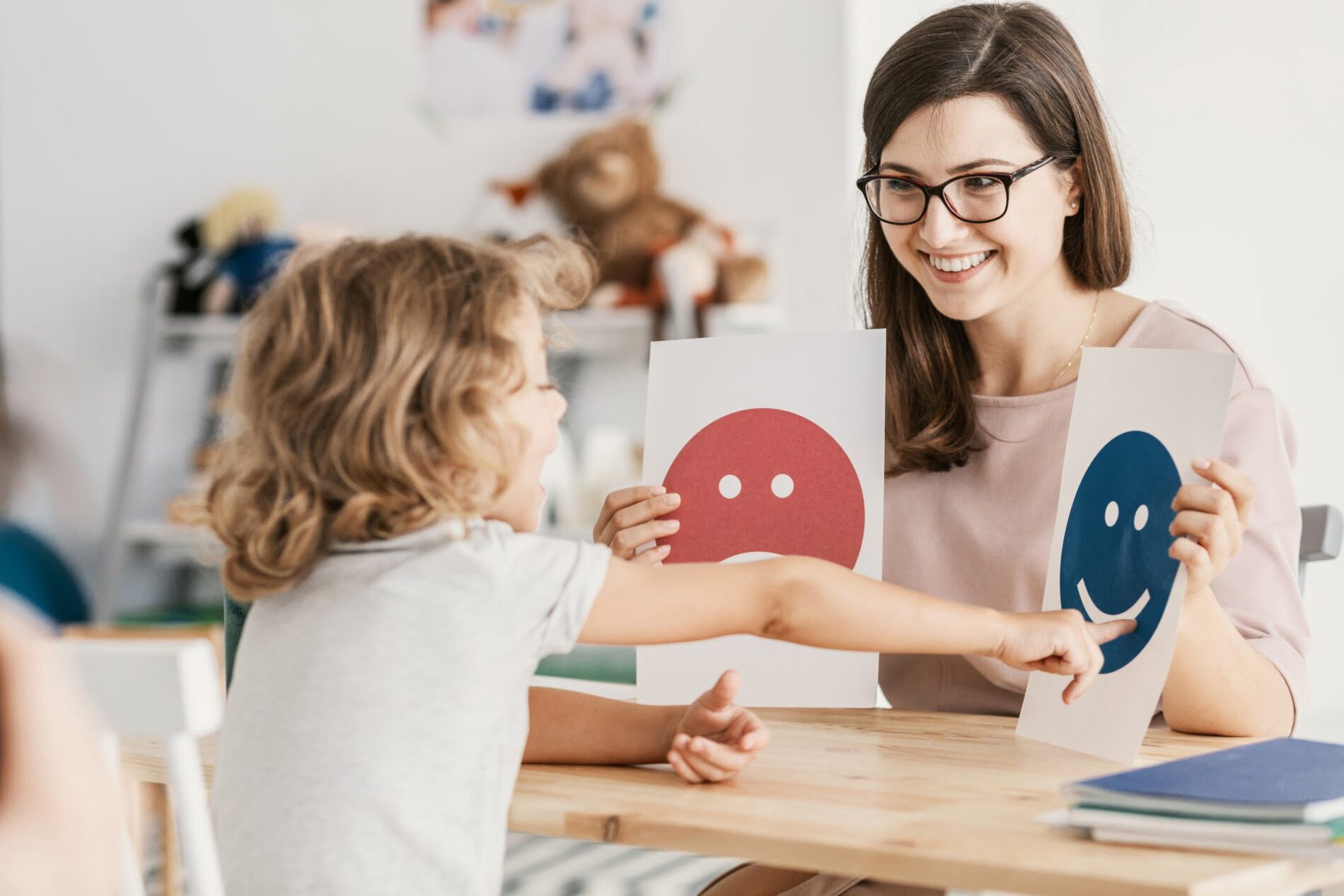
CBT, which is frequently called the “gold standard” treatment for anxiety disorders, is a short-term (typically 12 weeks) therapy that focuses on the idea that how we think, feel, and act is all linked and has a significant impact on our happiness.
Children learn to think about what they do and how it might make them feel. They also learn to question if their worries are true. If they aren’t, then children can try thinking of different ideas that might be better.
CBT helps children grasp the idea that avoiding their fear makes their anxiety worse, but facing it makes them stronger.
As a result of repeat exposure to scary things, the child will be better prepared for situations that make them feel anxious. The child will also have fewer worries about what might happen in those situations.
Other Therapies
Acceptance and commitment therapy (ACT) uses acceptance and mindfulness skills to teach children how to live in the moment without self-judgment as a method of warding off or coping with undesirable ideas or actions.
To acknowledge your worries, you need to be able to separate yourself from them.
Dialectical behavioral therapy (DBT) is a kind of CBT. DBT focuses on developing people’s coping skills for anxiety and discomfort without resorting to avoidance or overreacting to circumstances.
In dialectical behavior therapy, the emphasis is on assisting youngsters in accepting responsibility for their problems. The objective of DBT is to help children talk about distressing events and anxiety.
Helping Anxiety in Children At Home
Parents might do things at home that help children with anxiety. Here are a few ways you can help:
- Don’t avoid what your child fears. This may provide immediate comfort, but employing avoidance as a coping mechanism just seals in and magnifies the anxiety.
- Offer comfort and model positive responses. Listen to your kids’ worries, but try not to make it worse. You can help them by teaching them how to feel better about their worries.
- Help your child learn to tolerate their fear. Gradually show your child the thing they are afraid of. While you do this, use relaxation techniques to calm their fear response. This will help them learn how to cope with fear and think about what is going on.
The way that parents deal with their worries might have a significant influence on how children manage theirs. While parents should not pretend to be immune to anxiety, they should focus on demonstrating to their children that it may be resolved calmly and sensibly.
Conclusion
It’s important to be aware of the signs and symptoms of anxiety in children. Anxiety can manifest itself in many different ways, so it is best if you know how your child acts when experiencing an attack or flare-up. Educate yourself on what types of things might trigger their anxieties as well as coping techniques that may help them feel better. The more prepared you are, the less anxious you will be!
For more information, please contact MantraCare. Anxiety is a common mental health condition characterized by persistent feelings of worry, fear, and apprehension. If you have any queries regarding Online Anxiety Counseling experienced therapists at MantraCare can help: Book a trial Anxiety therapy session
